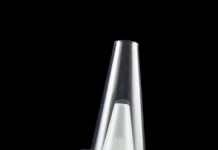Welding plays a crucial role in the success of any construction project, especially when it comes to ensuring the structural safety of the final product. The quality of the welding work can have a significant impact on the overall strength and integrity of the structure, determining whether it will remain sound and secure over time or be prone to failure and potential hazards.
When it comes to bad welding, the consequences can be extremely serious. Poorly executed welds can result in weak and brittle joints that are prone to cracking, breaking, or coming apart under the stress of normal usage or external forces. These defects can compromise the overall stability of the structure and pose a significant risk to the safety of anyone who comes into contact with it.
In contrast, good welding practices can greatly enhance the structural safety of a project. A well-executed weld ensures a strong and durable connection between two metal pieces, providing the structural integrity needed to support the weight and forces placed on the structure. A properly welded joint can withstand the test of time and maintain its strength and stability over the long term, ensuring the safety of those who interact with the structure.
One of the key factors that differentiate bad welding from good welding is the level of expertise and attention to detail that the welder brings to the job. A skilled and experienced welder will carefully prepare the materials, execute precise welds, and apply appropriate techniques to ensure a strong and reliable joint. They will also be able to identify and address any potential issues or defects before they compromise the integrity of the weld.
On the other hand, a poorly trained or inexperienced welder may rush through the job, neglect important steps in the welding process, or use improper techniques that result in weak and unreliable welds. This lack of attention to detail and expertise can lead to structural weaknesses that compromise the overall safety of the project.
In addition to the skills and expertise of the welder, the quality of the materials and equipment used in the welding process also play a critical role in determining the structural safety of the final product. Using high-quality materials that are compatible with each other and the welding process is essential for creating strong and reliable welds. Similarly, using proper welding equipment and following recommended procedures can help ensure that the welds meet industry standards and are capable of withstanding the demands of the structure.
Overall, the impact of bad welding vs good welding on project success cannot be overstated when it comes to enhancing structural safety. By prioritizing quality, expertise, and attention to detail in the welding process, project managers can ensure that the final product is strong, durable, and safe for those who will interact with it. Investing in good welding practices is an investment in the safety and longevity of the structure, making it a critical component of any successful construction project.
























![InstaPro APK Download Latest Version 2023 [Anti Ban]](https://olo.my.id/wp-content/uploads/2023/10/instapro-100x70.jpg)
